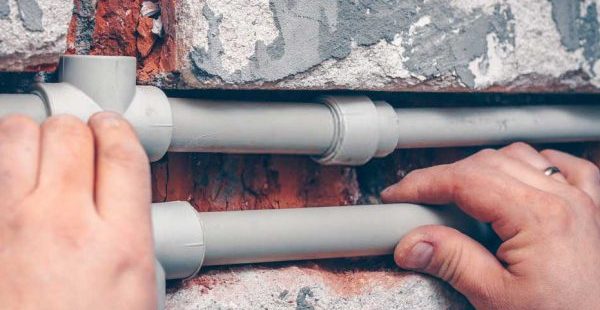Just how do you feel in regards to How Does Pipe Relining Work??

Pipeline relining is a rather brand-new principle as well as a long-overdue alternative to the conventional method of fixing water drainage troubles by digging. It skips the excavation process leaving structures intact and also returning your water drainage to its previous glory. Blocked drains pipes, split pipes, origin direction, collected sedimentation, as well as lots of various other problems related to water drainage systems can now be fixed utilizing this technique. It simply entails finishing the old pipelines with a substance that is entrusted to embed in the shape of the old pipeline. The old pipe currently functions as a protection for the recently formed ones, therefore getting rid of drainage problems in the nearby future. Adjustment water drainage issues while bordering structures continue to be intact is a terrific benefit of this procedure. While pipeline relining seems like an eye-catching option for homeowner it is a service that needs special skill and also training that a regular plumber might not be able to supply. Thus you need to get in touch with qualified and skilled plumbings that are experienced in pipe relining.
Relining Appropriate
A customized lining bladder is made and placed right into your drain to coat the internal surface area with lining resin. Compressed air is made use of to spread the resin uniformly on the inner surface area of the pipelines. Finally, the finishing is entrusted to cure and set for the following few hours.
We install the pipeline relining solution
When we're ready to set up the relined area of pipeline, we saturate the felt liner in an epoxy resin, as well as put the uninflated bladder right into the pipeline lining. A rope is affixed to each end of the liner, which we make use of to pull the pipeline lining right into area by utilizing the existing gain access to points to your pipelines.
By utilizing the attached ropes and the existing access points to your pipes, we pull the really felt lining and uninflated bladder right into place inside the pipe, without any digging. We line it up by using a specialist drain video camera to ensure it's in precisely the best place. Then, we pump up the bladder with air, which blows out the felt liner to secure against the existing pipes, creating a new pipeline that holes up any breaks or fractures. The bladder stays inflated up until the resin has cured to create a tough, challenging pipeline.
After that we deflate the bladder and also draw it revoke the pipeline, leaving you with a brand-new, hard as well as watertight pipe.
Benefits of Pipe Relining
Negative Aspects of Pipeline Relining
Pipe relining is a process that calls for specialized ability. Thus, it can not be performed by simply any type of plumber. Likewise, practical maybe, it is not ideal for all cases. As an example, in cases where the pipe has big splits or big internal voids, the staying solution will not be able to develop a precise form. Pipe patching can be carried out in situation of smaller sized damages.
The Relining Process
As has actually already been discussed, the relining procedure need to be executed by skilled and qualified experts if the procedure will achieve success. It takes certain succinct and purposeful actions to finish the job properly.
Drain pipes Clearing
After it has actually been validated that pipe relining is viable, the drain needs to be cleared of any type of clog with particles, debris, and blockages. This is generally made with a high-pressure jet of water. The water drainage is then observed with the cam once more to identify any blockage that may impact the relining procedure.
Drainage Evaluation
This is the very first step aimed at both inspecting the level of damages and the stability of the pipeline continuing to be as the remedy to the issue handy. It is done with a drain cam. The electronic camera is placed within the pipe as well as the video is made use of to find any kind of irregularities such as pipeline imbalance, missing sections, little or large spaces, as well as aged pipeline product.
Last Examination
It is needed to evaluate the end result of the remaining process to identify if it succeeded or not. This is made with the exact same drainpipe camera approach as was utilized for the first examination. Hereafter, your freshly relined drainpipe awaits usage.
How Does Pipe Relining Work?
How This Process Works
Pipe relining works by fixing your pipes from the inside. A flexible felt tube made of polyester or fiberglass and saturated with resin is inserted into the existing, damaged pipe. Over time, this special resin hardens to form another pipe within the original pipe. This method is considered trench-less technology because it involves minimal digging and forms a much simpler and more cost-effective alternative for traditional pipe repair methods.
Steps for Pipe Relining
Step One: Verify the pipe is a suitable candidate for relining: First, a professional installer examines your pipes to assess the extent of the damage. This used to be accomplished with closed-circuit cameras, but today forced electron leak location (FELL) equipment provides a more thorough inspection and allows for the creation of more effective solutions.
Step Two: Prepare and measure the pipe: Next, the blocked pipes are thoroughly cleaned to return them to their original dimensions. Regular cleaning methods are employed first and any blockages are removed, usually with robotic cutters. After this, a high-pressure water jet ensures the pipe walls are fully clean and ready for the resin to attach. The camera equipment is employed a second time to verify the pipe is ready for insertion. Then, the length of the pipe is calculated to determine the length of the lining.
Step Three: Insert and cure pipe liner: The flexible felt tube saturated with epoxy resin is inserted into the pipe. Inside the tube is a bladder that inflates and pushes the tube to form to the inner walls of the pipe. Next is curing, the longest part of the process. Hot water is used to harden the resin, followed by UV radiation to cause final hardening. Before the process can be complete, junctions and inspection pits must be cut out. Junctions are removed with robotic cutters, while inspection pits are removed with grinders or surface-level cutters.
Step Four: Final inspection: The bladder is deflated and removed, then the installer uses the remote camera again to verify that the liner has been placed appropriately.

We had been shown that write-up about How Does Pipe Relining Work? from an associate on our other website. Enjoyed our entry? Please share it. Help others check it out. I appreciate reading our article about What are the key benefits of pipe relining?.
Access certified emergency plumbing excellence.